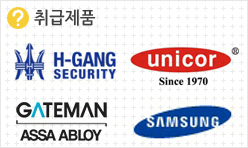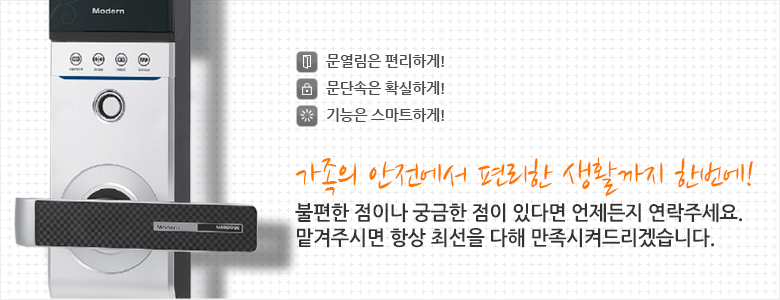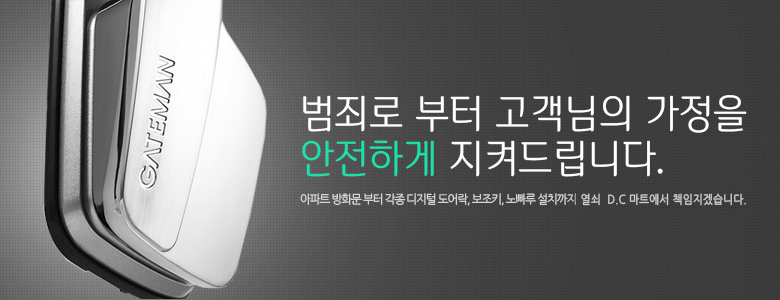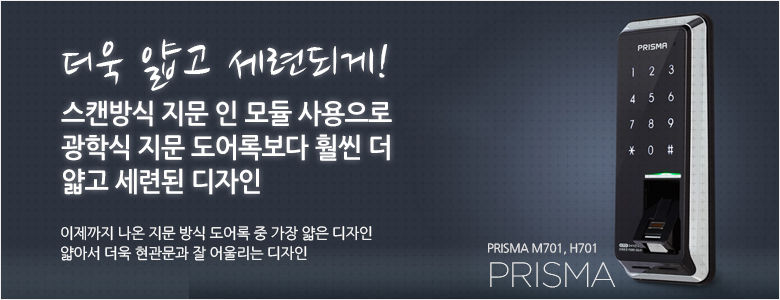9 . What Your Parents Taught You About Confined Space Containers
페이지 정보
작성자 Silas 작성일25-01-09 07:42 조회3회 댓글0건본문
연락처 :
주소 :
희망 시공일 :
Using Confined Space Containers to Prevent Hazards
 Confined areas are special environments that could pose various hazards. These include oxygen deficiency and toxic atmospheres.
Confined areas are special environments that could pose various hazards. These include oxygen deficiency and toxic atmospheres.
Since these areas are confined, they can also cause issues with accessibility, communication and rescue. It is recommended to avoid these areas unless it is absolutely necessary.
Training
It is crucial that workers working in areas that are restricted are educated to recognize hazards and take the appropriate precautions. This training can help prevent accidents and ensure that employees are ready to respond in the event of an emergency. The training covers subjects like entry procedures and permits, warning signs as well as personal responsibilities and air monitoring equipment and possible hazards.
Workers should be trained on basic emergency procedures that can be used in the event of an in-confined-space emergency. This includes locking and tagging out connected pipes, assessing breathable air quality, forcing ventilation, and ensuring that rescue personnel are available.
Although this training is a great idea for any employee who be in confined areas but it is particularly important for those who frequently visit these areas. This includes entrants and attendants as and supervisors. This kind of training is also beneficial to representatives of controlling companies, host employers, safety officers and other employees on construction sites that have confined spaces, since they will be responsible to ensure that entry procedures are in place.
The course focuses on a variety of dangers, such as lack of oxygen, toxic gases, and fires. It teaches you how to use special equipment like self-rescue equipment and stresses the importance of having a clear mind during emergencies. It also covers important procedures, such as confirming the zone is safe for entry and maintaining communication with a outside person in an emergency situation that is restricted areas.
Besides the training mentioned above There is also a tool that can complement the theoretical instruction to include an immersive and real-life component: virtual reality. This technology provides trainees with to experience the procedure of entering a confined space using VR glasses. The trainer configures an experience, but it is the user who decides to enter the space.
A mobile container offers an efficient and safe way to simulate the conditions that might exist in small spaces. The mobile container is used in a wide range of industries, such as mining and energy industries. It's also utilized by law enforcement, firefighting and other emergency response teams to build skills in danger.
Ventilation
Ventilation is the process of circulating air to remove harmful pollutants from a restricted space. The aim is to maintain oxygen levels at a safe amount and to keep the level of contaminants below LEL (above the upper explosive limit). It is also essential that the air in the space be safe, which means it must not contain harmful gasses or hydrocarbons that could create a dangerous atmosphere.
The most significant risk in restricted spaces is the build-up of toxic gases and/or oxygen depletion. However, confined spaces can also be a threat due to other dangers, including exposure to biological and chemical substances as well as fire hazards, engulfment and Container Modifications Ideas physical hazards, among others. Before any work can be done in a confined zone, a risk analysis must be completed. This will reveal any potential hazards and determine the mitigation measures needed, such as ventilation.
In the course of risk assessment, it is essential that a thorough inspection of the area is conducted to ensure that the area meets the necessary requirements for entry. This inspection will include the assessment of entry and exit points, and determining if there are liquids, or free-flowing materials that could entangle or suffocate, a worker. It will also reveal the possibility of fire hazards and chemical and biological exposure.
After the risk assessment After the risk assessment, a Confined Space Entry Permit is required. A plan for the work has to also be developed. This plan should include an exact method of ventilation for containers for sale Uk (heavenarticle.com) the space and details the required equipment that must be brought into the area.
If the space is an old shipping container sizes uk container that was used as a storage area outside the building, it must be altered to allow sufficient airflow.
This involves creating an opening for entrance into the confined space as well as ducting to remove any contaminants that might be present. The ducting must be designed to allow for the right amount of air flow to be achieved taking into consideration the size of the area and the type and amount of contaminants, as well as their permissible exposure limits. To be efficient, a ventilation fan must be able meet the minimum rate of air change of 20 air changes per hour.
Atmosphere
Gases, vapors, and fumes in enclosed spaces can reach dangerous levels without adequate ventilation. Even household cleaning products can produce poisonous fumes when confined to a small area.
Methane naturally accumulates in confined areas due to the decomposition organic material. This toxic gas can be produced by sewers, manure pits, and underground storage tanks. Carbon monoxide can also be generated by burning equipment.
An unsafe atmosphere can be caused by flammable liquids or gases, a suspended state of combustible dust in air or by an oxygen deficient environment. These kinds of environments pose a threat of fire or explosion and can cause the death of workers immediately. Fluids that flow freely or solids that are free-flowing pose a risk for entrants, which can lead to drowning or asphyxiation. The risk is increased when an entrant becomes engulfed by the flowing material and is unable to escape.
Personnel who work in confined areas are required to carry portable direct-reading monitors that can detect oxygen and toxic gases. It's important to know that a contaminant only creates an unsafe atmosphere if its concentration exceeds the TLVs to cause acute health effects or if it is likely to impair a worker's ability to leave the area without assistance.
If the oxygen level falls below 19.5 percent, a dangerous atmosphere can quickly turn deadly. This lower level is known as an oxygen deficient atmosphere. Since contaminants such as carbon monoxide and hydrogen sulfide are not visible and are difficult to detect, workers to recognize them.
To ensure that the instrument is operating properly the instrument should be inspected at minimum every five minutes. A wire can break, a sensor could be loose, or a trimpot can shift, and all of these can alter the reading. Electrical instruments must also be checked for continuity and voltage. Workers should also wear proper PPE, such as respirators and safety harnesses, or lines of support in the event that they need to escape a dangerous situation. A plan for emergency rescue must be in place and workers should be always within sight of a trained professional.
Access
It doesn't matter if it's an attic, crawl space or a small storage compartment those who enter these spaces must adhere to specific safety guidelines and communicate with an attendant designated. These confined spaces can present serious dangers to workers who are not adequately prepared.
The most common causes of accidents in confined spaces include inadequate training, inexperience or disregarding permit conditions, and lack of rescue procedures. This last point is especially crucial, considering that three of the five people who die in accidents involving confined space are rescuers. This is due to the fact that it is easy for hazards to enter the confined space, or the air could become dangerous because of a lack of oxygen or hazardous substances, or other environmental issues.
A confined space is any place that meets any of four criteria: it's enclosed, difficult to access and contains a hazard that could kill someone in less than 10 minutes. It may also be difficult for outsiders to access the people inside in the event of an emergency. These include small grow-rooms commercial freezers and keg coolers. They also include tunnels, sewers water tanks, silos, access shafts and tunnels.
Those in the workplace that work regularly in these types of workplaces will usually require special equipment to complete their inspection and repair tasks. These tools and techniques can make the work safer and faster and reduce the risk of injuries and deaths. One good example is the camera-on-a-stick that allows workers to lower a camera down into a confined space to get images from under and around objects without having to enter the space.
Portable gas monitors are another important piece of equipment for confined spaces. The device can be used to identify dangerous levels of gases in the air that could be threatening the safety of those working inside. It can be used to determine the potential sources of danger, such as leaky pipework or a lower oxygen level.
There are various other tools and technologies that can be used to improve the efficiency and effectiveness of repair and inspection tasks in areas with limited space. For instance, a tiny robot that can be steered through the space to gather information is an ideal option for workers who need to perform complex maintenance in tight spaces. A holographic display is an excellent method of displaying where hazards are and Construction Containers how to avoid them.
주소 :
희망 시공일 :
Using Confined Space Containers to Prevent Hazards
 Confined areas are special environments that could pose various hazards. These include oxygen deficiency and toxic atmospheres.
Confined areas are special environments that could pose various hazards. These include oxygen deficiency and toxic atmospheres.Since these areas are confined, they can also cause issues with accessibility, communication and rescue. It is recommended to avoid these areas unless it is absolutely necessary.
Training
It is crucial that workers working in areas that are restricted are educated to recognize hazards and take the appropriate precautions. This training can help prevent accidents and ensure that employees are ready to respond in the event of an emergency. The training covers subjects like entry procedures and permits, warning signs as well as personal responsibilities and air monitoring equipment and possible hazards.
Workers should be trained on basic emergency procedures that can be used in the event of an in-confined-space emergency. This includes locking and tagging out connected pipes, assessing breathable air quality, forcing ventilation, and ensuring that rescue personnel are available.
Although this training is a great idea for any employee who be in confined areas but it is particularly important for those who frequently visit these areas. This includes entrants and attendants as and supervisors. This kind of training is also beneficial to representatives of controlling companies, host employers, safety officers and other employees on construction sites that have confined spaces, since they will be responsible to ensure that entry procedures are in place.
The course focuses on a variety of dangers, such as lack of oxygen, toxic gases, and fires. It teaches you how to use special equipment like self-rescue equipment and stresses the importance of having a clear mind during emergencies. It also covers important procedures, such as confirming the zone is safe for entry and maintaining communication with a outside person in an emergency situation that is restricted areas.
Besides the training mentioned above There is also a tool that can complement the theoretical instruction to include an immersive and real-life component: virtual reality. This technology provides trainees with to experience the procedure of entering a confined space using VR glasses. The trainer configures an experience, but it is the user who decides to enter the space.
A mobile container offers an efficient and safe way to simulate the conditions that might exist in small spaces. The mobile container is used in a wide range of industries, such as mining and energy industries. It's also utilized by law enforcement, firefighting and other emergency response teams to build skills in danger.
Ventilation
Ventilation is the process of circulating air to remove harmful pollutants from a restricted space. The aim is to maintain oxygen levels at a safe amount and to keep the level of contaminants below LEL (above the upper explosive limit). It is also essential that the air in the space be safe, which means it must not contain harmful gasses or hydrocarbons that could create a dangerous atmosphere.
The most significant risk in restricted spaces is the build-up of toxic gases and/or oxygen depletion. However, confined spaces can also be a threat due to other dangers, including exposure to biological and chemical substances as well as fire hazards, engulfment and Container Modifications Ideas physical hazards, among others. Before any work can be done in a confined zone, a risk analysis must be completed. This will reveal any potential hazards and determine the mitigation measures needed, such as ventilation.
In the course of risk assessment, it is essential that a thorough inspection of the area is conducted to ensure that the area meets the necessary requirements for entry. This inspection will include the assessment of entry and exit points, and determining if there are liquids, or free-flowing materials that could entangle or suffocate, a worker. It will also reveal the possibility of fire hazards and chemical and biological exposure.
After the risk assessment After the risk assessment, a Confined Space Entry Permit is required. A plan for the work has to also be developed. This plan should include an exact method of ventilation for containers for sale Uk (heavenarticle.com) the space and details the required equipment that must be brought into the area.
If the space is an old shipping container sizes uk container that was used as a storage area outside the building, it must be altered to allow sufficient airflow.
This involves creating an opening for entrance into the confined space as well as ducting to remove any contaminants that might be present. The ducting must be designed to allow for the right amount of air flow to be achieved taking into consideration the size of the area and the type and amount of contaminants, as well as their permissible exposure limits. To be efficient, a ventilation fan must be able meet the minimum rate of air change of 20 air changes per hour.
Atmosphere
Gases, vapors, and fumes in enclosed spaces can reach dangerous levels without adequate ventilation. Even household cleaning products can produce poisonous fumes when confined to a small area.
Methane naturally accumulates in confined areas due to the decomposition organic material. This toxic gas can be produced by sewers, manure pits, and underground storage tanks. Carbon monoxide can also be generated by burning equipment.
An unsafe atmosphere can be caused by flammable liquids or gases, a suspended state of combustible dust in air or by an oxygen deficient environment. These kinds of environments pose a threat of fire or explosion and can cause the death of workers immediately. Fluids that flow freely or solids that are free-flowing pose a risk for entrants, which can lead to drowning or asphyxiation. The risk is increased when an entrant becomes engulfed by the flowing material and is unable to escape.
Personnel who work in confined areas are required to carry portable direct-reading monitors that can detect oxygen and toxic gases. It's important to know that a contaminant only creates an unsafe atmosphere if its concentration exceeds the TLVs to cause acute health effects or if it is likely to impair a worker's ability to leave the area without assistance.
If the oxygen level falls below 19.5 percent, a dangerous atmosphere can quickly turn deadly. This lower level is known as an oxygen deficient atmosphere. Since contaminants such as carbon monoxide and hydrogen sulfide are not visible and are difficult to detect, workers to recognize them.
To ensure that the instrument is operating properly the instrument should be inspected at minimum every five minutes. A wire can break, a sensor could be loose, or a trimpot can shift, and all of these can alter the reading. Electrical instruments must also be checked for continuity and voltage. Workers should also wear proper PPE, such as respirators and safety harnesses, or lines of support in the event that they need to escape a dangerous situation. A plan for emergency rescue must be in place and workers should be always within sight of a trained professional.
Access
It doesn't matter if it's an attic, crawl space or a small storage compartment those who enter these spaces must adhere to specific safety guidelines and communicate with an attendant designated. These confined spaces can present serious dangers to workers who are not adequately prepared.
The most common causes of accidents in confined spaces include inadequate training, inexperience or disregarding permit conditions, and lack of rescue procedures. This last point is especially crucial, considering that three of the five people who die in accidents involving confined space are rescuers. This is due to the fact that it is easy for hazards to enter the confined space, or the air could become dangerous because of a lack of oxygen or hazardous substances, or other environmental issues.
A confined space is any place that meets any of four criteria: it's enclosed, difficult to access and contains a hazard that could kill someone in less than 10 minutes. It may also be difficult for outsiders to access the people inside in the event of an emergency. These include small grow-rooms commercial freezers and keg coolers. They also include tunnels, sewers water tanks, silos, access shafts and tunnels.
Those in the workplace that work regularly in these types of workplaces will usually require special equipment to complete their inspection and repair tasks. These tools and techniques can make the work safer and faster and reduce the risk of injuries and deaths. One good example is the camera-on-a-stick that allows workers to lower a camera down into a confined space to get images from under and around objects without having to enter the space.
Portable gas monitors are another important piece of equipment for confined spaces. The device can be used to identify dangerous levels of gases in the air that could be threatening the safety of those working inside. It can be used to determine the potential sources of danger, such as leaky pipework or a lower oxygen level.
There are various other tools and technologies that can be used to improve the efficiency and effectiveness of repair and inspection tasks in areas with limited space. For instance, a tiny robot that can be steered through the space to gather information is an ideal option for workers who need to perform complex maintenance in tight spaces. A holographic display is an excellent method of displaying where hazards are and Construction Containers how to avoid them.

댓글목록
등록된 댓글이 없습니다.





